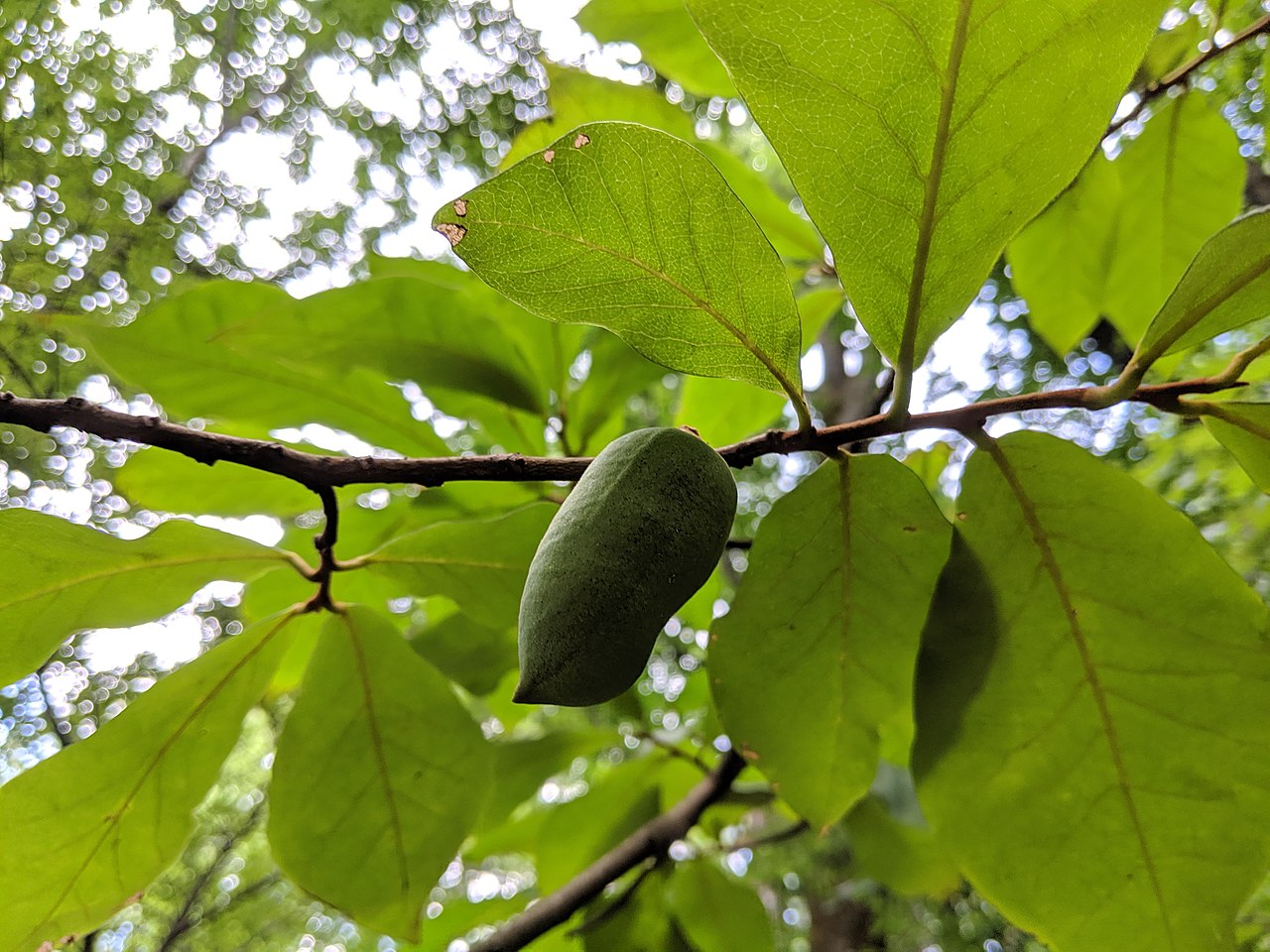
VIEW ON NATURE: Virginia’s
Forgotten Fruit
By: Stephen Wendt
What fruit has a creamy, custard-like flesh with a tropical flavor often described as a combination of mango meets banana meets pineapple or vanilla? It’s the largest tropical fruit native to Virginia and the US (up to 6 inches & 16 ounces) and grows wild in over 25 states. Many towns, parks, lakes, etc. have been named after it. It fruits in the fall and has twice the sugar of a peach or apple and is high in vitamins A and C. Give up? It’s the pawpaw.
The earliest record of pawpaws came from the destructive de Soto expedition in 1541. Native Americans were actively cultivating pawpaw trees east of the Mississippi River and are said to have also spread them from Texas to the Midwest. It was a very important fruit to the colonists and westward settlers, including Lewis and Clark who at one point heavily relied on wild pawpaws, nuts and seeds when game ran scarce.
George Washington and Thomas Jefferson were particularly fond of pawpaw fruit. Washington favored it for dessert and wrote in his diary on March 7th 1785 that he, “planted all my Cedars, all my Pawpaw, and two Honey Locust Trees…”. Thomas Jefferson cultivated them at his much-loved Monticello, with some saying it was his favorite fruit.
The wild, thin trunked pawpaw trees I know grow in groves along creek bottoms and ravines in the understory shadows of taller poplars, oaks, and hickories. I’ve seen them in the mountains and the foothills of Virginia and even along the shady C&O Canal. They have unique, 2-inch wide, upside-down, maroon-colored flowers capable of producing several fruits. Their leaves are unmistakably dark green and oblong, growing up to a foot long. Pawpaws have few pests, but if you see any zebra swallowtail butterflies about, pawpaw trees are not far away because they are the only host plant for the caterpillars of the beautiful black, white and red zebras.
Also known as the poor man’s banana, pawpaws have only more recently come into commercial cultivation. Bringing pawpaws to market has been a challenge because of their obscurity, easy bruising and very short shelf life. However, that’s changing through research, selective breeding, and increasingly popular pawpaw festivals. Today, over 50 commercial nurseries sell 27 varieties of pawpaw seeds and trees.
Pawpaws have a unique creamy, custard-like texture. The tropical flesh is lemon to orange-yellow in color. Enthusiasts like myself enjoy eating them fresh from the tree. Slice them lengthwise, discard the inedible seeds, and spoon out the wonderful natural surprise.
I recall collecting them the first time along babbling Buck Run near Luray for a wonderful treat all to myself. However, others prefer to use pawpaws in ice cream, smoothies, breads, muffins, beer, chutneys and the like. For me, the best bet is to collect as many as possible before the bears, raccoons, grey foxes, opossums, and other forest mammals devour them; then wash, skin, de-seed, puree, and freeze Virginia’s autumn prize for enjoyment throughout the year. Bon appetite!
(Copyright © 2012 Annandale Chamber of Commerce. All rights reserved. (Photographs & images, on this page, and on this website, are not available for use by other publications, blogs, individuals, websites, or social media sites.)
Copyright 2012 Annandale Chamber of Commerce. All rights reserved. Privacy Policy



